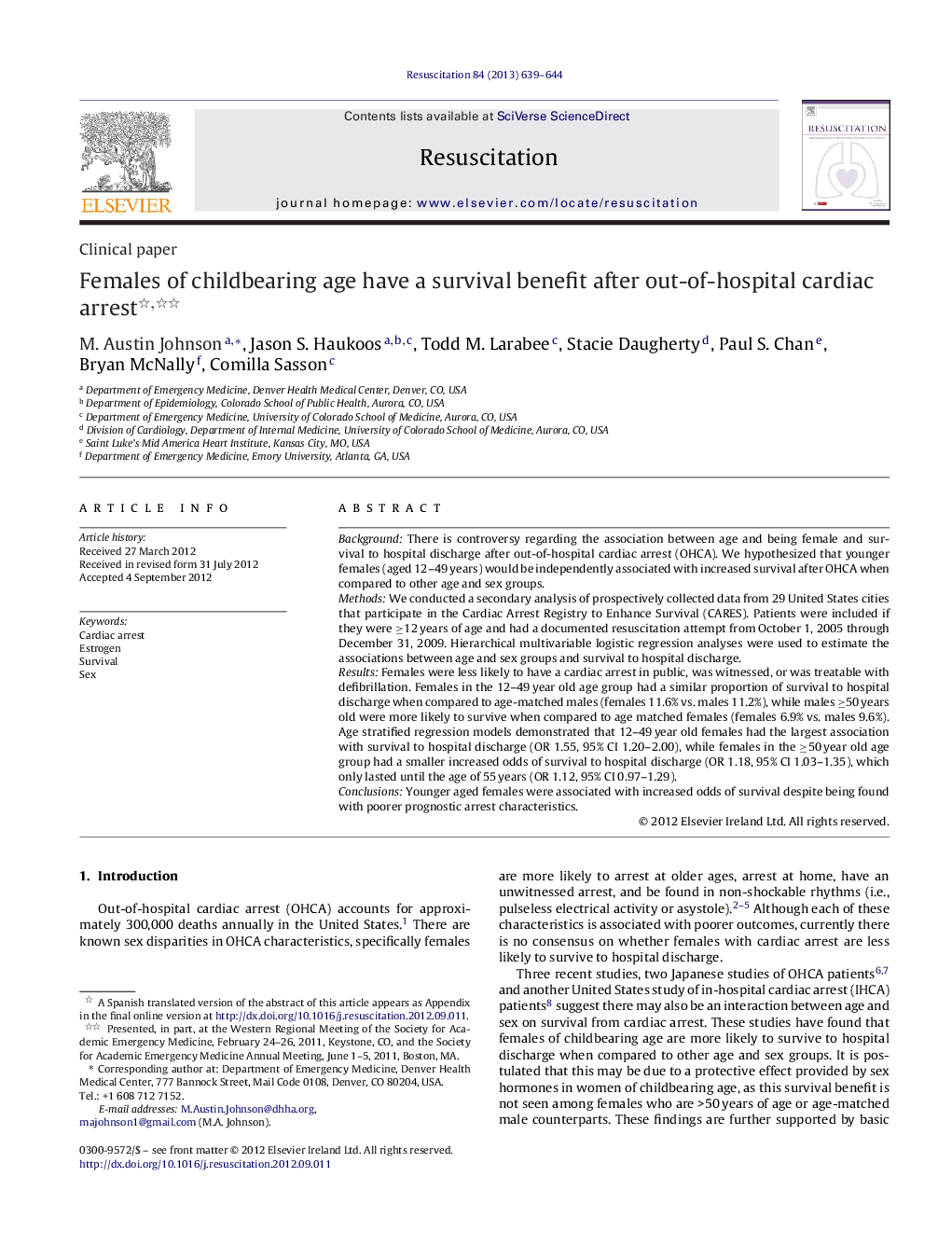| Article ID | Journal | Published Year | Pages | File Type |
|---|---|---|---|---|
| 5998765 | Resuscitation | 2013 | 6 Pages |
BackgroundThere is controversy regarding the association between age and being female and survival to hospital discharge after out-of-hospital cardiac arrest (OHCA). We hypothesized that younger females (aged 12-49 years) would be independently associated with increased survival after OHCA when compared to other age and sex groups.MethodsWe conducted a secondary analysis of prospectively collected data from 29 United States cities that participate in the Cardiac Arrest Registry to Enhance Survival (CARES). Patients were included if they were â¥12 years of age and had a documented resuscitation attempt from October 1, 2005 through December 31, 2009. Hierarchical multivariable logistic regression analyses were used to estimate the associations between age and sex groups and survival to hospital discharge.ResultsFemales were less likely to have a cardiac arrest in public, was witnessed, or was treatable with defibrillation. Females in the 12-49 year old age group had a similar proportion of survival to hospital discharge when compared to age-matched males (females 11.6% vs. males 11.2%), while males â¥50 years old were more likely to survive when compared to age matched females (females 6.9% vs. males 9.6%). Age stratified regression models demonstrated that 12-49 year old females had the largest association with survival to hospital discharge (OR 1.55, 95% CI 1.20-2.00), while females in the â¥50 year old age group had a smaller increased odds of survival to hospital discharge (OR 1.18, 95% CI 1.03-1.35), which only lasted until the age of 55 years (OR 1.12, 95% CI 0.97-1.29).ConclusionsYounger aged females were associated with increased odds of survival despite being found with poorer prognostic arrest characteristics.
